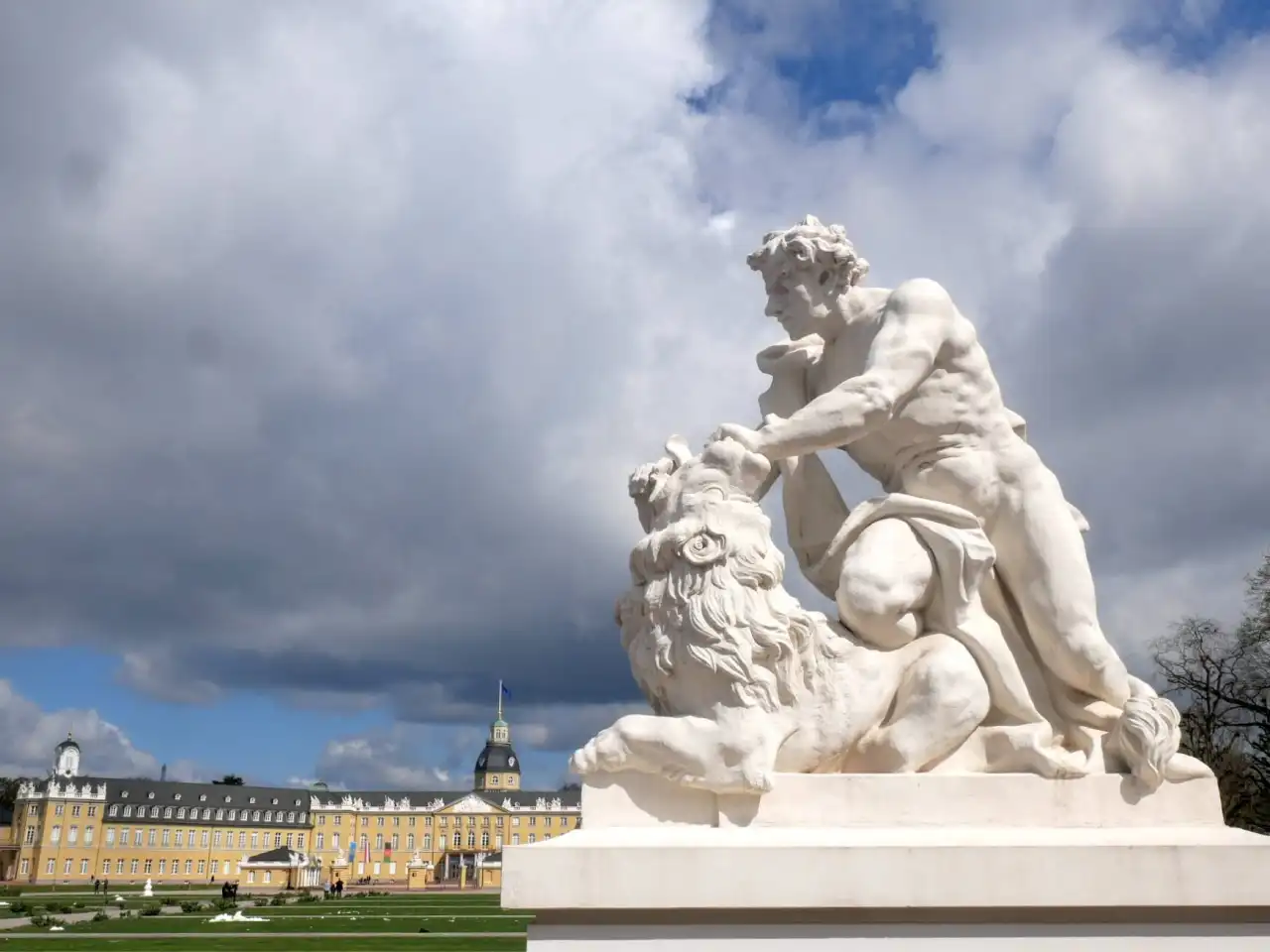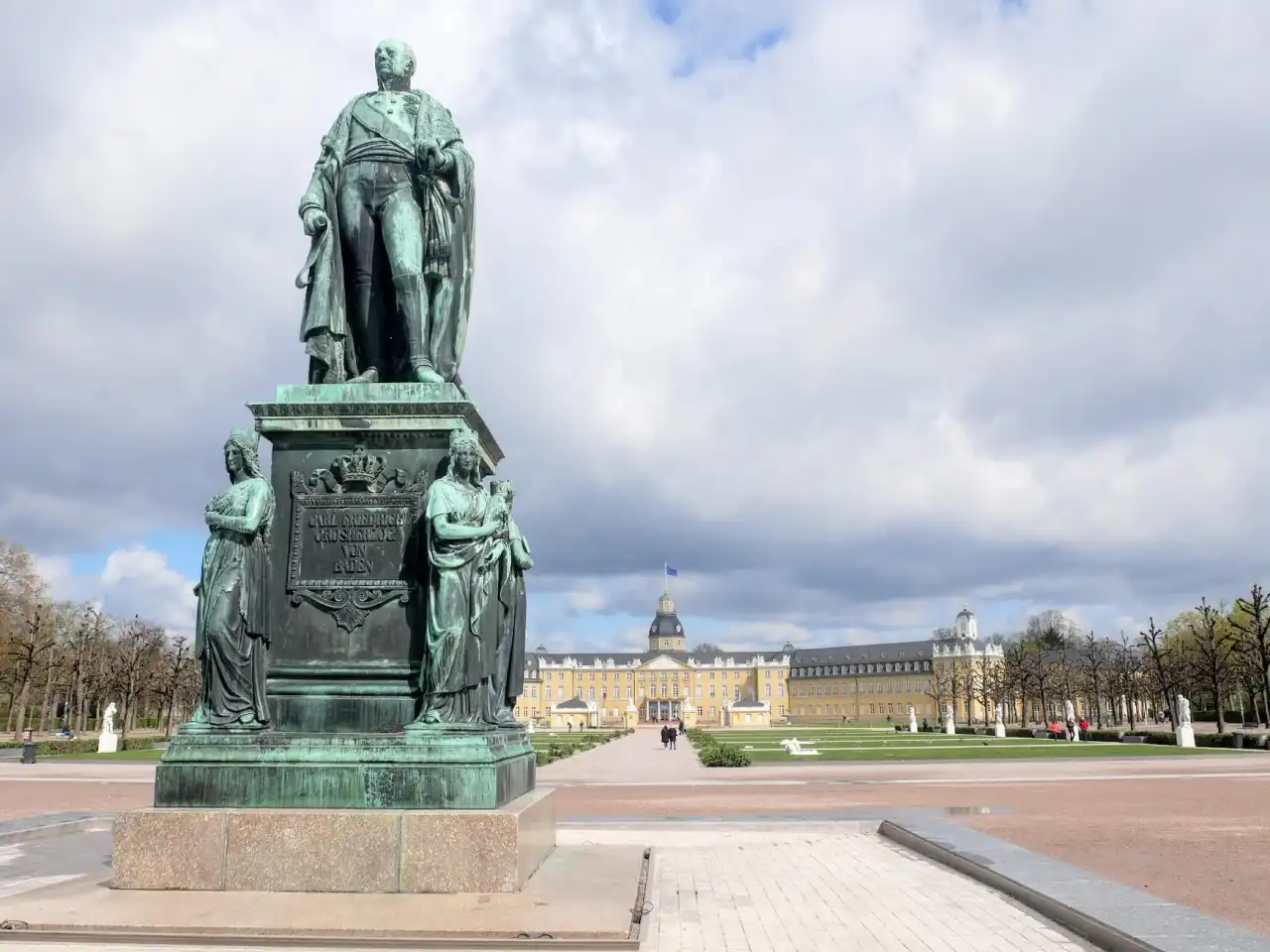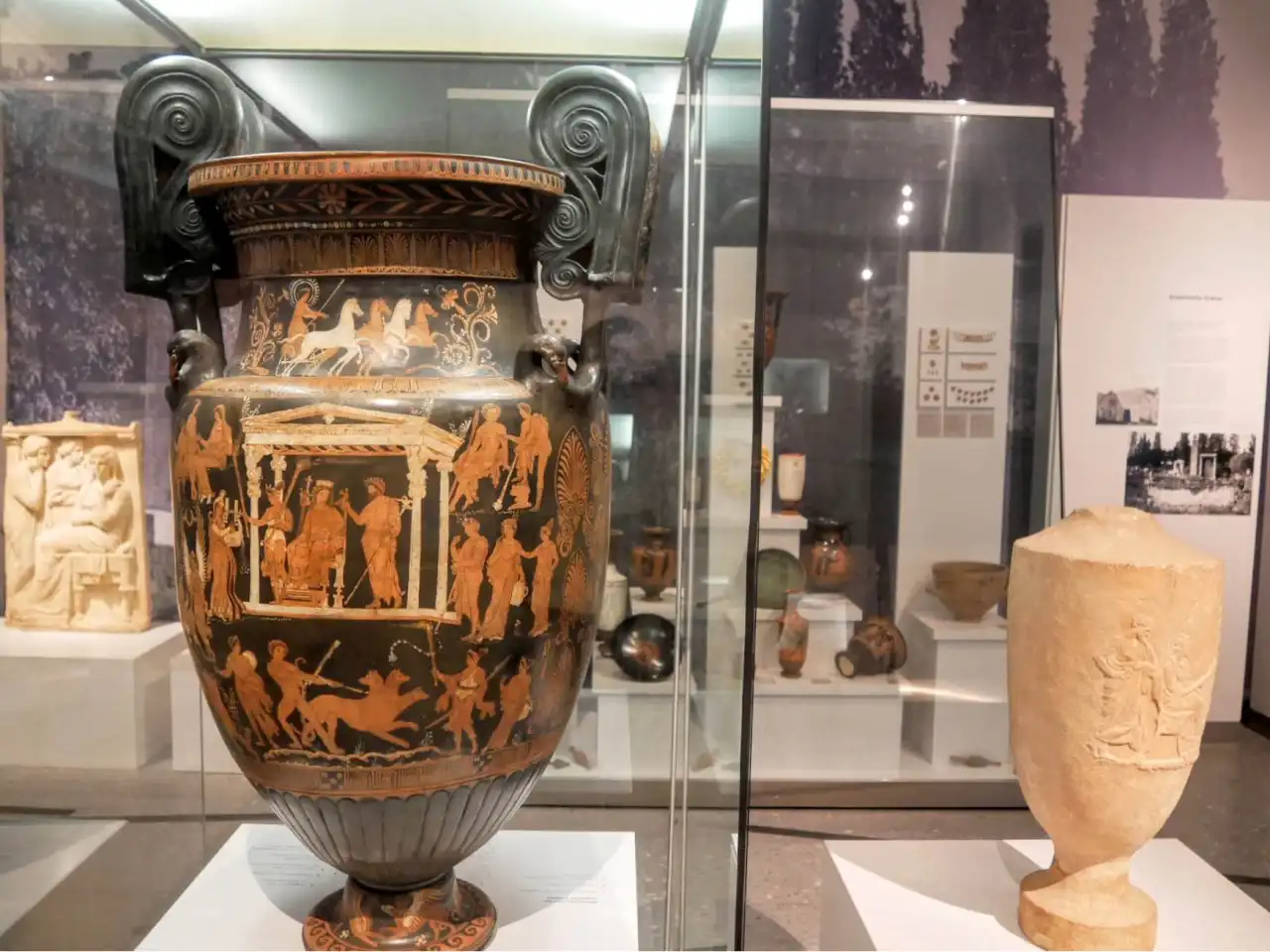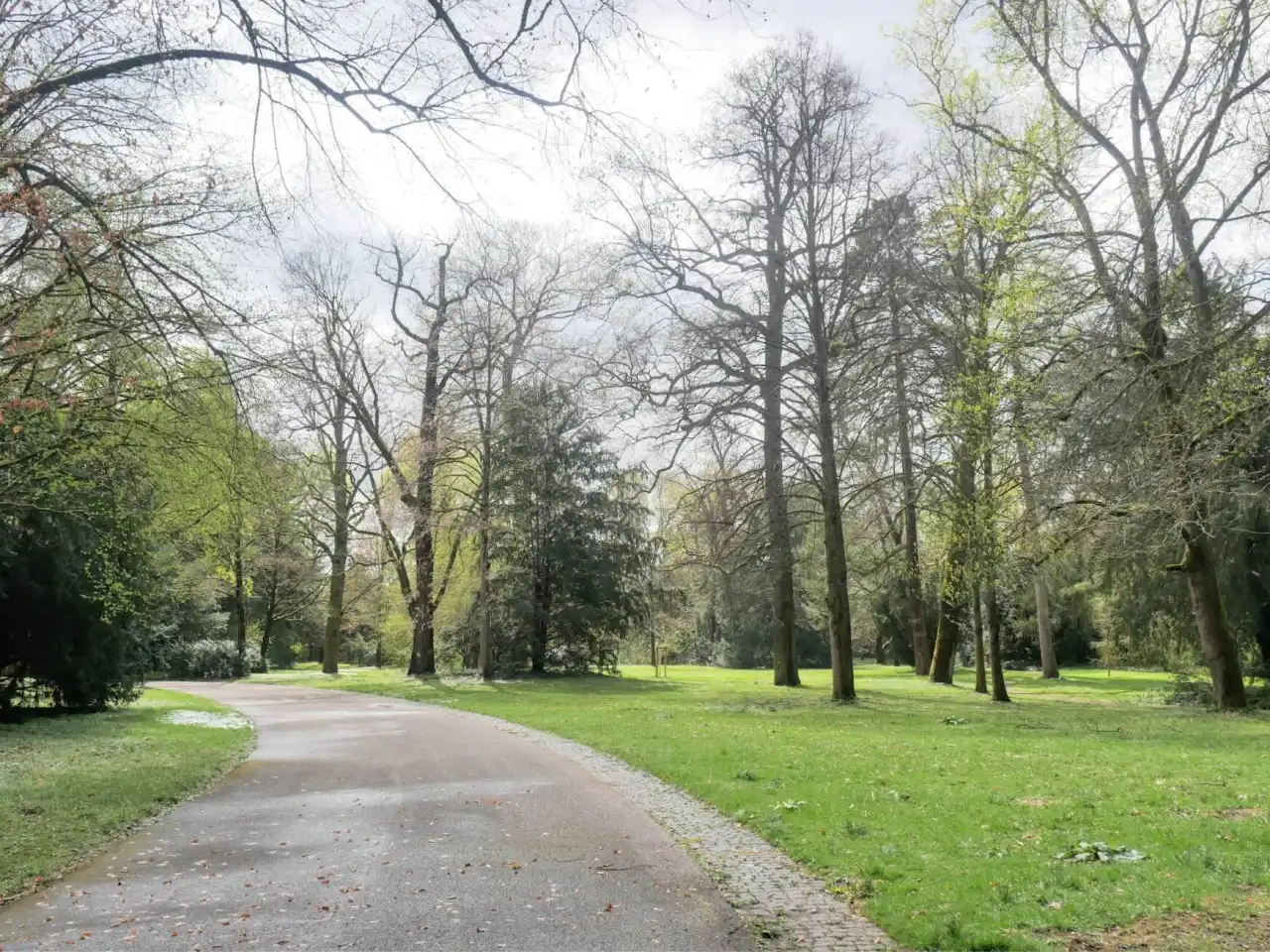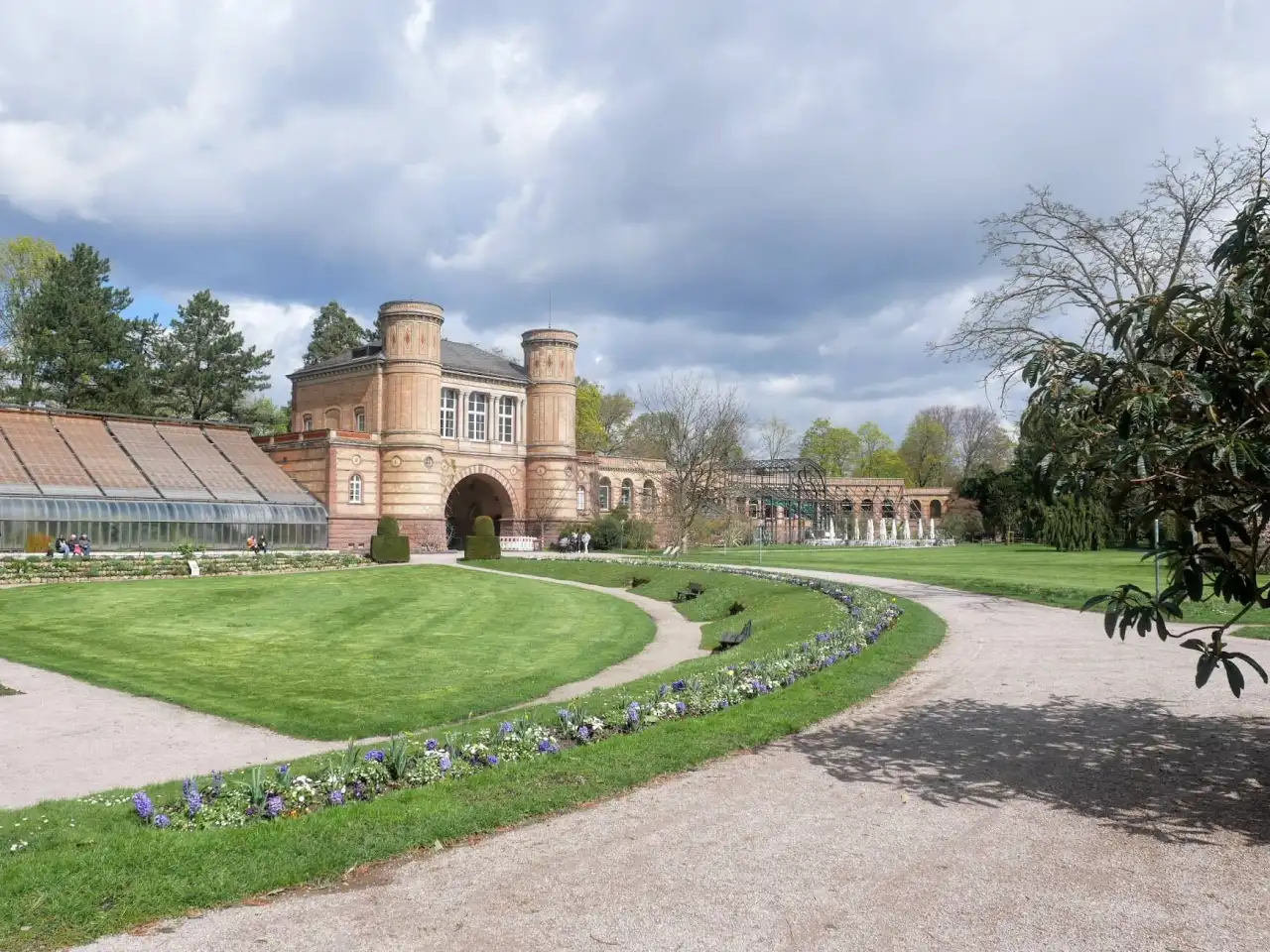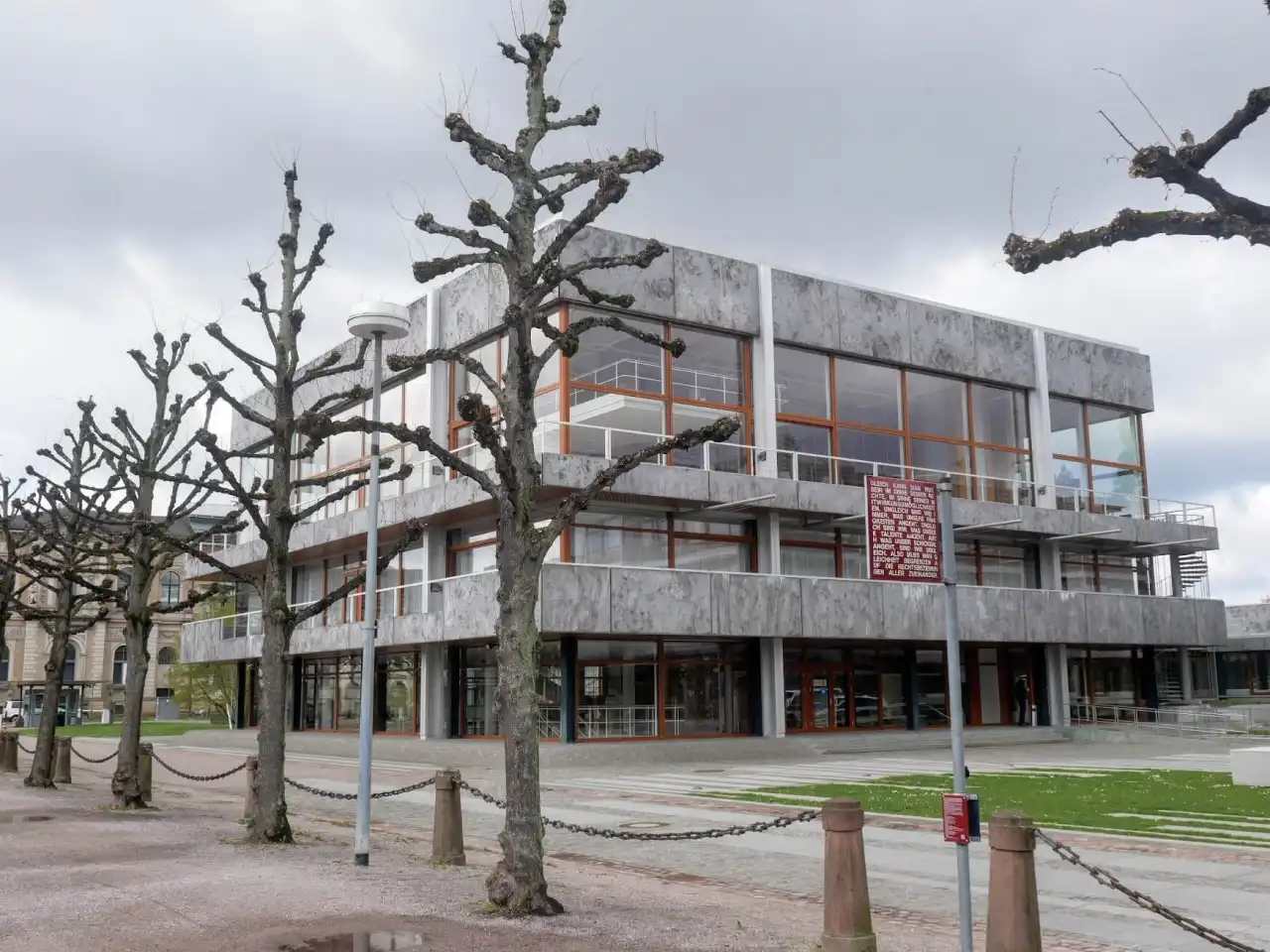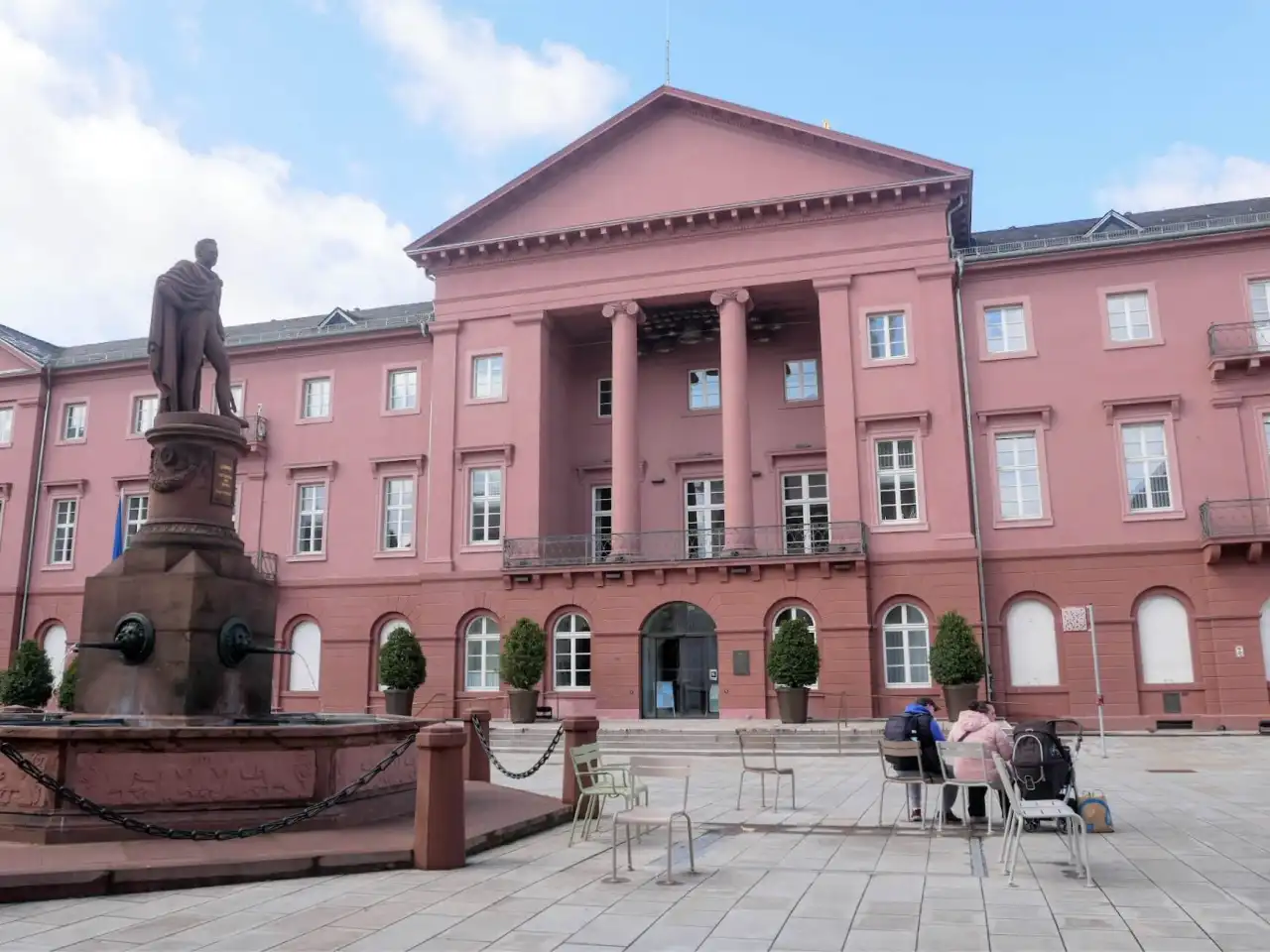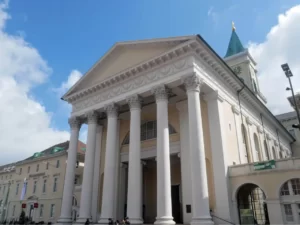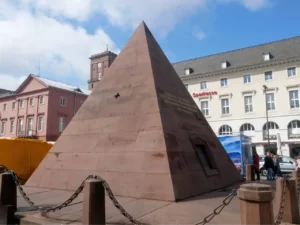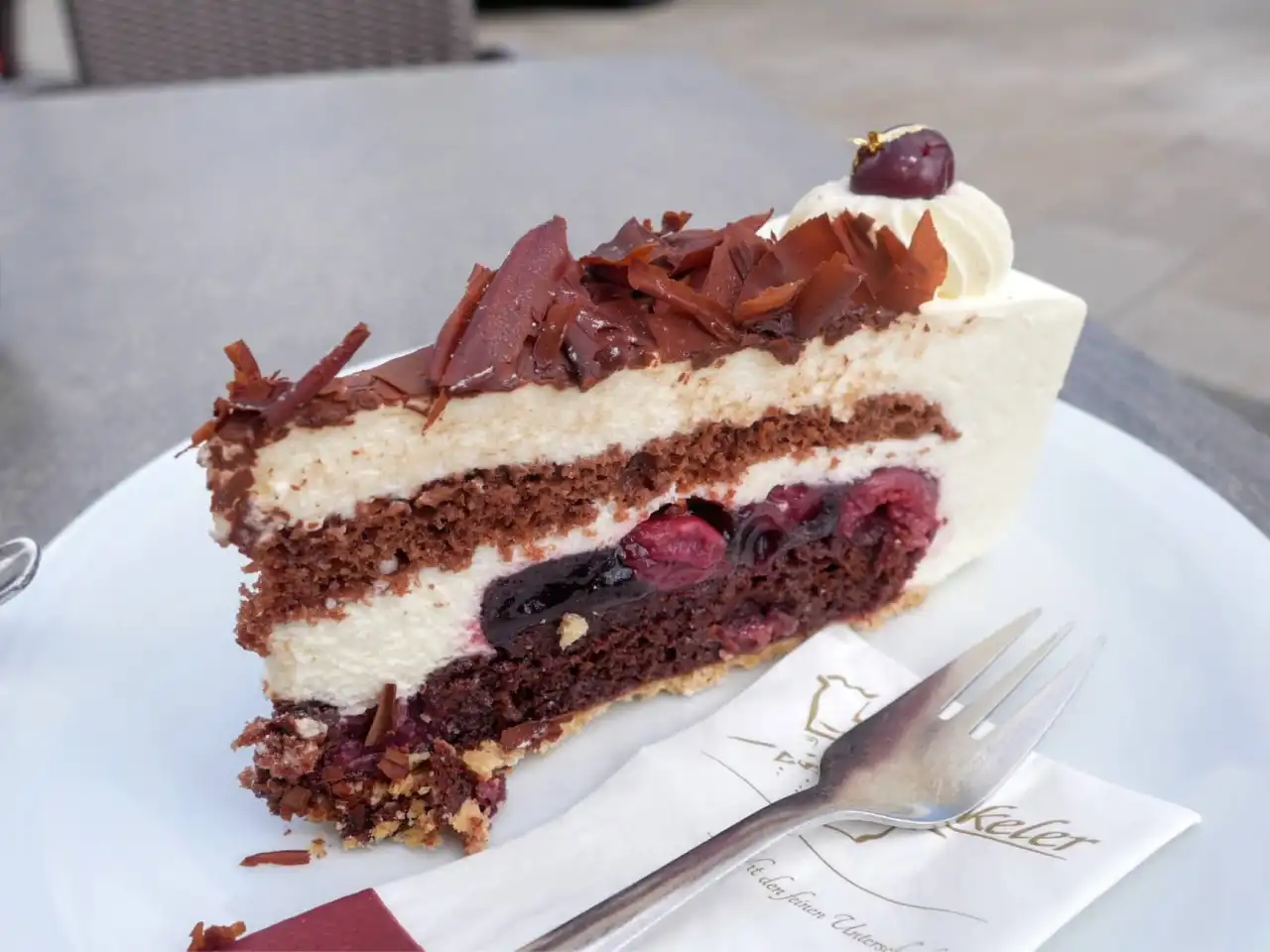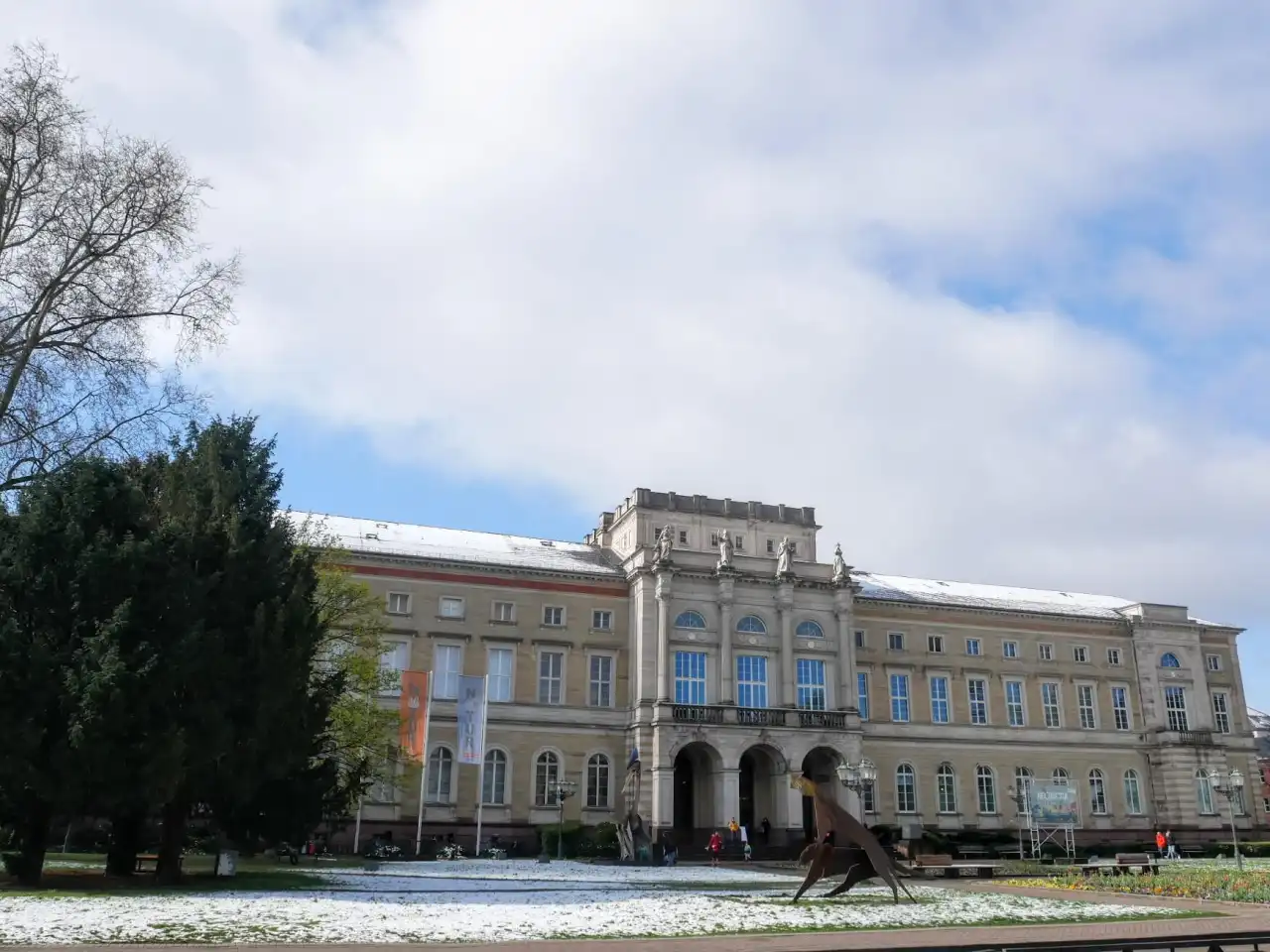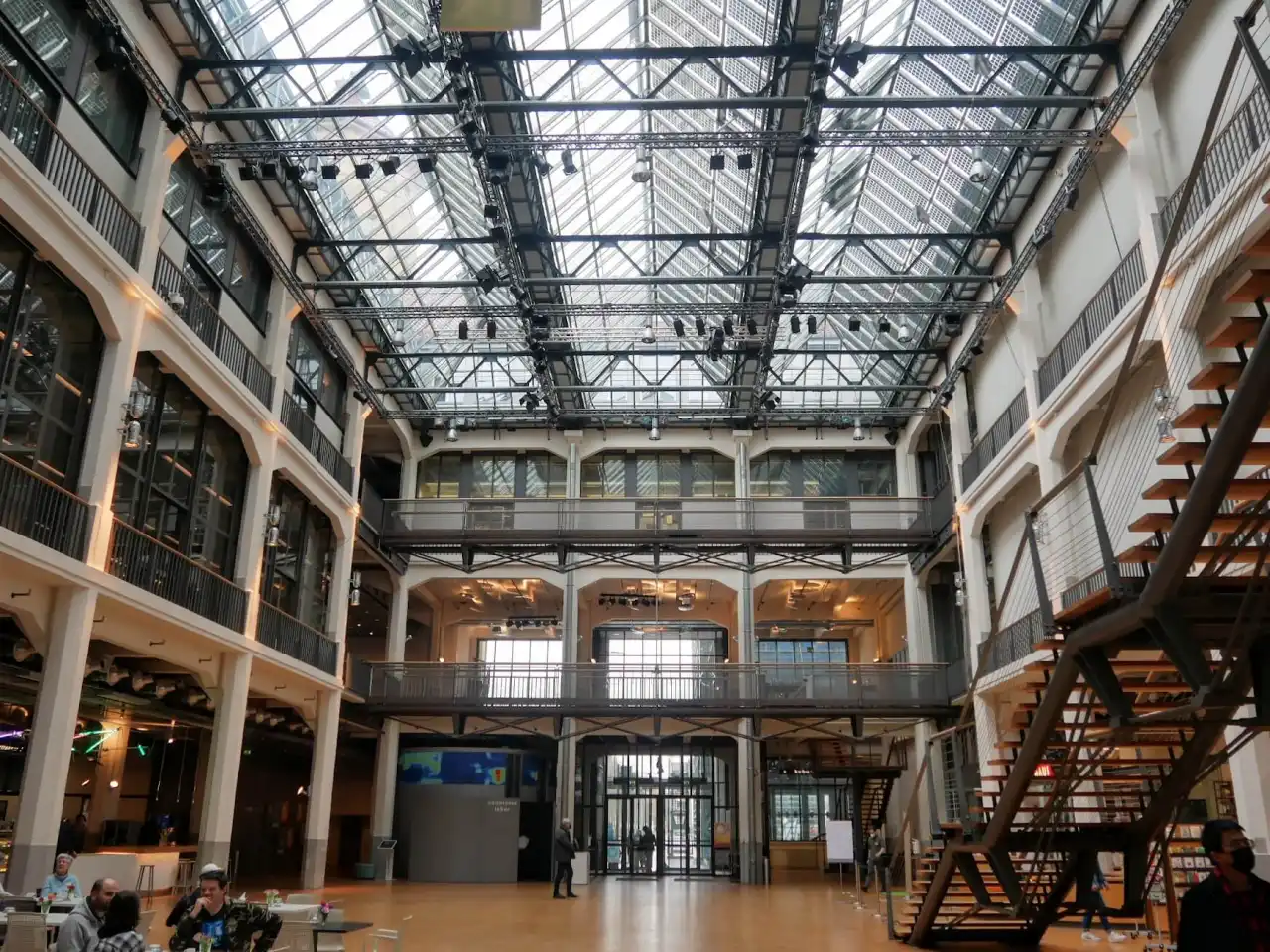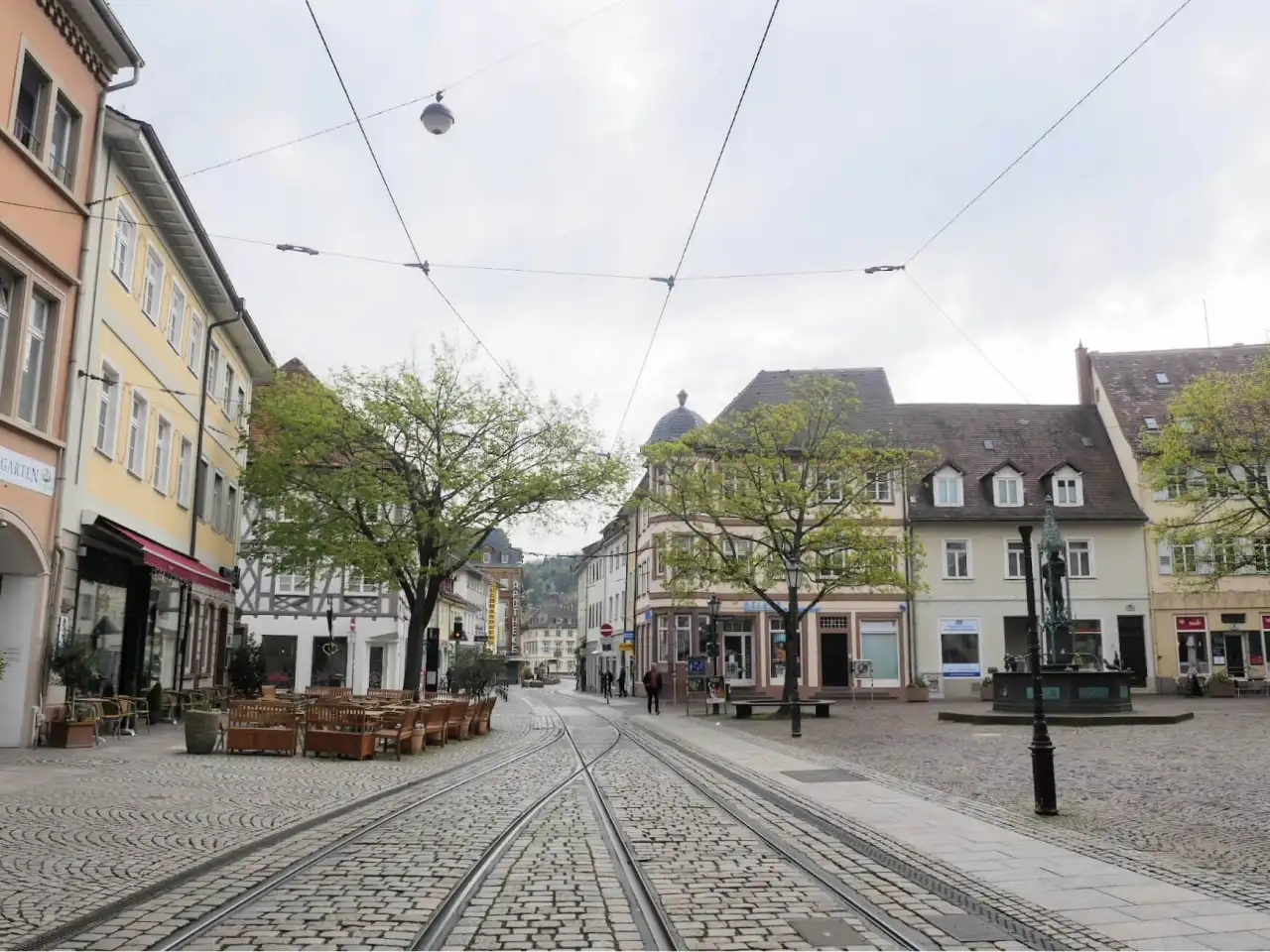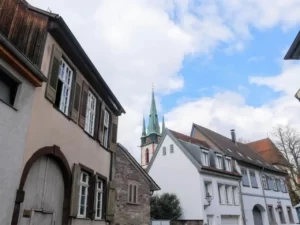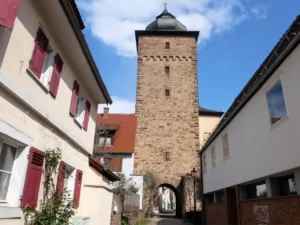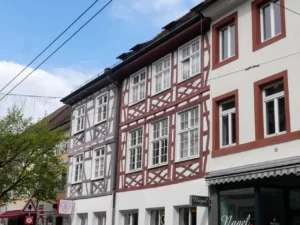With its interesting history, beautiful architecture, many cultural sites and numerous parks all around the town, Karlsruhe is absolutely worth visiting. That lovely town could be easily explored on foot, and it makes a perfect weekend break in Germany. If you would like to learn more about what to see in Karlsruhe, read this Karlsruhe Travel Guide.
Karlsruhe Travel Guide
I visited Karlsruhe on a press trip organised by Karlsruhe Tourismus in April 2022 and created this Karlsruhe Travel Guide after it. This post contains some affiliate links.
Karlsruhe is a town located in the southwest of Germany in the region called Baden-Württemberg. Because it’s situated at the edge of Schwarzwald Forest, it offers a perfect combination of cultural travel in the city and active tourism in nature. It’s also placed very close to the Rhine River and the border with France.
Karlsruhe is a unique place because it’s a typical German town with impressive historical and timber architecture, many cute pastry shops, a large technology sector and innovative media arts.
On the other hand, it also has a bit of a southern or even Mediterranean feel. Maybe that’s because of the large Italian community living in the city. You’ll find many excellent ice cream shops cherishing the tradition of making the perfect ice cream and keeping those secret gelato recipes in the family for generations. Or perhaps, that joie de vivre could be felt because of the proximity of France. Whatever the reason behind it is, life is good in Karlsruhe.
History of Karlsruhe
Karlsruhe is a pretty young city by European standards, and we actually know the exact date it was founded – June 17th 1715. Before that time, the centre of the area was in the town of Durlach, which is today one of the neighbourhoods in Karlsruhe.
After the Margrave Charles III William of Baden-Durlach got into a conflict with its citizens, he went hunting in the forest next to the town. The legend says he slept under the tree and dreamed about establishing the new city. After he woke up, he decided to found the town Karlsruhe (which means ‘Charles’ peace’) at that very place.
He built the Karlsruhe Palace, which soon became the centre of his new city. Thirty-two streets leading from it in all directions form a shape of the bicycle wheel or a fan. Hence the city’s nickname is the ‘Fan City’.
To attract people to his new city, he offered craftsmen, merchants and other citizens to build their houses in Karlsruhe for free. They also didn’t have to pay a tax for a few years. Many of them moved to a new town, which soon outgrown its predecessor Durlach.
⤷ Read more: Best museums you have to visit in Europe
What to see in Karlsruhe
I spent a long weekend in Karlsruhe and had a chance to explore it very well during that time. I went everywhere on foot, except when I took a tram to the Durlach neighbourhood.
⤷ TIP: If you have a limited time to spend in Karlsruhe, I suggest you join one of the city’s Hop On Hop Off busses. It will take you to all the places you shouldn’t miss in Karlsruhe. You can get your online ticket on a link here.
Karlsruhe Palace
The best way to start your visit to Karlsruhe is by exploring the Karlsruhe Palace and its surroundings first. It’s centrally located, making it a great starting point for exploring the city. At the same time, visiting the museum located inside it will give you a lovely overview of the Karlsruhe’s history.
The palace’s construction is closely linked to the establishment of the city. It was built for the city founder Margrave Charles III in 1715. The original building was partially made of wood, so it had to be rebuilt in stone already in 1746. During the Allies’ bombing in the Second World War, the palace was heavily damaged. It was repaired for the third time after the war. Its interior was redesigned to better suit its new purpose as a museum space.
⤷ TIP: For one of the best views of the ‘Fan City’ and its radiating streets, climb the palace’s roof tower.
Badisches Landes Museum
Today, the Karlsruhe Palace is home to the Badisches Landes Museum, which is a great place to learn about the history of that town. You’ll see the city’s model, archaeological findings from the region and many more interesting artefacts.
The museum is also home to some fantastic Egyptian and Greek art collections that are a must-see for any archaeology enthusiast visiting Karlsruhe. Some other exhibits, like the ones of the Medieval, Renaissance or early Modern art, are also worth visiting.
⤷ Read more: 20 Archaeological sites you have to visit in Europe
Palace Gardens
Something all the fantastic liveable cities have in common are the huge parks and green areas. And Karlsruhe is not an exception.
The Karlsruhe Palace is surrounded by beautiful vast parks and gardens. The smaller one in front of it is home to numerous pretty statues. Walking around it is almost like taking an art history lesson.
However, the larger one behind the palace is the vast tranquil oasis in a middle of the city. I could definitely imagine Charles III sleeping below one of those trees dreaming about his perfect city. I wandered around it for hours, getting lost in it, listening to the birds singing and enjoying all the different views of the palace.
⤷ TIP: If you don’t feel like walking but would still like to explore the Palace Gardens, you can take a train around them. The train departure point is at the back of the palace, and the ride takes around twenty minutes. You can find its operating hours, ticket price and other helpful info on this link.
The Majolica Porcelain Manufactory Museum
While walking through the park, I followed the path of blue ceramic tiles from the Palace to the place I visited next.
Located on the site of an original Majolica Porcelain Manufactory, this place is a unique porcelain centre today. It’s home to a museum where you can learn more about the majolica art and crafts production taking place here since 1901. But also to a gallery where you can buy some works, a lovely cafe, restaurant and other spaces.
I visited both museum and gallery and enjoyed seeing both history and some new interpretations.
By exploring all the ceramic objects at the Greek collection of the Badisches Landes Museum the day before and then seeing this museum’s collection, I somehow rediscovered my passion for ceramics during my weekend at Karlsruhe. I also realised how important the tradition of its creation is important for this German town.
⤷ TIP: One thing to be aware of when visiting the Karlsruhe museums is that most texts and explanations are in German. A few texts in Badisches Landes Museum and ZKM were in English. But the majority of all the others were in German. If you are like me and don’t speak German, be sure to prepare in advance for the exhibitions you will visit. I will create a guide around Karlsruhe Museums and publish it on Culture Tourist next week which will be useful for the non-German speakers visiting some of these places.
Botanical Garden
Have I already mentioned in this Karlsruhe Travel Guide how the city is filled with beautiful parks?
A beautiful historical botanical garden, located just behind the Karlsruhe Palace is connected to the palace gardens. It was founded all the way back in the 18th century and soon became home to numerous exotic trees, flowers and plants.
Although it doesn’t host the variety of species it used to have, this botanical garden is still a wonderful place to walk, relax on one of the benches and enjoy the view of fountains and some lovely historic architecture.
The Federal Constitutional Court of Germany
Karlsruhe has a long tradition of cherishing democracy, human rights and freedom. Its founder’s grandson, Carl Friedrich, made an official act whit which he gave the freedom to serves and abandoned the feudal system a few years before the French Revolution.
So, it is no surprise that Karlsruhe is home to the Federal Constitutional Court of Germany. The design of the building in which it’s located is stunning. Created in 1969 by architect Paul Baumgarten from Berlin, it symbolises the transparency of the court so well. The large windows that cover the whole building make it look as it flows.
Karlsruhe Market Square
Following one of those ‘fan’ streets, I got to the Karlsruhe main, Market Square. It’s a vibrant city square that’s a meeting place and a location of the weekly farmers’ market.
The large building made of red sandstone is the Town Hall, in which you can see models of a car and bicycle. The reasoning for it is that Karlsruhe was the hometown of Karl Benz, who designed the first car. And the city isn’t only known as the most bicycle-friendly city in Germany but was also home to quite a popular bicycle factory.
Opposite the town hall is the Karlsruhe Protestant Church. It was designed by the famous Karlsruhe architect Friedrich Weinbrenner. Built at the beginning of the 19th century, the architect found inspiration for it in the art of Antiquity. The same architect built some other buildings in the city, such as the Karlsruhe Catholic Church or Karlsruhe Mint. In all of them, the influences of Roman architecture could be clearly seen.
In the central part of the Market Square is the resting place of the city founder, made in the shape of a pyramid. Originally made of wood, it was rebuilt later on in a typical sandstone you’ll see on numerous buildings in the city.
⤷ TIP: The Karlsruhe Tourism Information office is also located in Market Square. Check it out for brochures, city maps and advice about the events happening in Karlsruhe during your visit.
Have Schwarzwald cake
While wandering around Karlsruhe, I noticed the city is home to many pastry shops and lovely cafes selling delicious cakes. While walking around it, I was overwhelmed by the smell of chocolate and by window displays filled with some lovely decorated chocolate truffles.
So, I couldn’t resist but visit one of those places. And after exploring the town for the whole morning, I took a bit of a break and had a cup of coffee and a slice of the Schwarzwald cake.
With so many cafe terraces, many Karlsruhe squares are being turned into the city’s living room packed with locals enjoying chatting with their friends and watching the world goes by. And I enjoyed being one of them for a few moments…
⤷ TIP: I explored Karlsruhe on a guided tour, and am recommending you doing the same. Mine was provided by the tourist office. However, you can also book a city tour here.
Natural History Museum
After a lovely break, I continued exploring Karlsruhe. And although at the beginning I was a bit reluctant to visit it, because I thought it’s more suitable for children, I visited the Natural History Museum during my trip to Karlsruhe, too. However, I was utterly wrong and truly enjoyed exploring its collection.
What makes this museum so unique is the fact it doesn’t only exhibits objects but also live plants and animals. And the most fascinating to me was the live coral reef.
ZKM
Another cultural spot in Karlsruhe that shouldn’t be missed is the Center for Art and Media – ZKM. Karlsruhe is proclaimed to be the UNESCO Creative City of Media Arts. And you can learn more about that side of the city at ZKM. It’s a cultural venue where exhibitions, performances and other exciting events are being organised.
I especially enjoyed the BioMedia exhibition with artworks and installations inspired by the biological world. You can see some videos from it in this Instagram highlight.
⤷ Read more: 10 Best exhibitions in European museums to visit in 2022
Durlach Neighbourhood
On my last day in Karlsruhe, I visited its oldest neighbourhood – Durlach. At the beginning of this blog post, I mentioned how Karlsruhe is actually younger than Durlach. But it grew over time, so Durlach became a neighbourhood there.
While strolling around its old cobbled streets on early Sunday morning, everything around me felt so dormant. There were barely any people passing by, and it looked as if I had walked into a fairytale setting. One of the highlights in Durlach that shouldn’t be missed is its old funicular, called Turmbergbahn. Opened in 1888, it’s the oldest funicular in Germany that takes passengers to the top of Turmberg Hill. The ride takes only around three minutes, but you’ll have a beautiful view from the top of Karlsruhe and its surroundings.
Besides that, the best way to explore the Durlach neighbourhood is by just strolling around its old centre, exploring the details on the streets, old timber houses and stumbling on some of its historical sites. Karlsburg Castle, built during the 16th century, is located in its centre and home to a small but interesting Pfinzgau Museum dedicated to the history of Durlach. Basler Torturm is the only preserved city gate in Durlach. However, I especially liked the small square in front of the Town Hall with a lovely fountain decorated with different kinds of animals.
Karlsruhe is a lovely vibrant city with a great combination of German cosiness and culture, innovative media arts and a relaxed lifestyle. It’s a great European destination for all cultural tourists. Hopefully, this Karlsruhe Travel Guide will help you enjoy that city even more.
I visited Karlsruhe on a press trip organised by Karlsruhe Tourismus. Many thanks to everyone at the tourism office, my guide Robert and Hotel Santo for organising such a wonderful visit for me. This Karslruhe Travel Guide was created as a part of our joined campaign.
This post contains some affiliate links.


